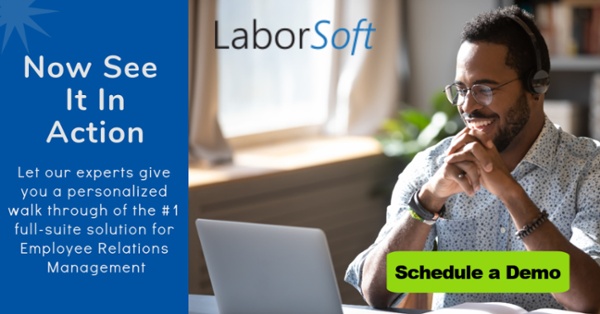5 Business Trends that Will Influence the Workforce in 2024
Read Time 6 mins | Oct 17, 2023 | Written by: Frankie Kourtis

Our ways of doing business have evolved rapidly the last few years, and 2024 will be no different. We are seeing an ongoing evolution into less rigid formats for the workplace, from greater location flexibility to less clearly defined schedules and more.
As we continue easing into the routines of the post-pandemic era, there are still many variables and question marks that remain. The market remains volatile, inflation is still high, and there are significant political disruptions abroad and at home. So, what are some of the trends that will mold and influence the workforce as we navigate the uncharted waters of 2024?
1. Focus on the Human-Centric Work Models, Not Just the Profits
Companies in 2024 will be looking beyond the bottom line. Organizations are facing monumental challenges, from a fiercely competitive talent landscape to an exhausted workforce, pressure to control costs, the rise of AI, and more. In a more fractured work environment, we're also giving employees accommodations due to their inability to commute to a physical office space or desire to work different hours of the day than they may have in past years. While profitability was just as important to C-suite executives in 2024, a new level of compassion for employee is important in this employee-driven labor market where incentives matter.
Gartner has found that human-centric work environments are:- 3.1x more likely to see low levels of fatigue among employees
- 3.2x more likely to experience high intent to stay
- 3.8x more likely to exhibit high performance
The benefits of human-centric work design is not lost on employees, as 82% agree it's important that their organization sees them as a person — not just an employee. This perspective carries over into HR, where 96% of learders are more concerned about their employees' wellbeing than they were in past years.
2. Location, Location, Location. . .NOT!
Realtors have always espoused the merits of this mantra — but in 2024, location will continue to become less of a factor. Companies from Facebook to Slack are already allowing their employees to work from home for good. The remote workforce is here to stay, and hybrid work has also taken the business world by storm. It's true that 90% of companies say they’ll return to the office by the end of 2024, but this doesn't mean a return to the typical 5 day commute with 9-5 jobs.
By 2024, the hybrid work model is expected to grow to 81%. By 2025, it is estimated that 70% of the workforce will be working remotely at least five days a month. There's no stopping this train now that we're on it, so businesses must adapt or fall behind.
Jobs that tout flexible work-from-home schedules have revolutionized the job seeking landscape. Flexible work will be a major priority for workers and job candidates in 2024, with the option to work from home, experience a 4 day workweek, or utilize flexible working hours at the top of many workers' minds. Where workers considered location as a primary criterion before, now it became a non-issue.
3. Emotional Intelligence & Mental Health in the Workplace
Technical skills still matter for success, but emotional intelligence has occupied the national conversation in regards to a healthy and productive workplace. Employees today recognize the value of empathy and of mental health. Emotional intelligence leads to higher job performance, lower turnover, and improved team dynamics. It's becoming increasingly common to see employees using sick bank time or PTO for “mental health days” and companies are more willing to go the extra mile in providing support or space for employees to take when they need it.
It also helped that many apps offer free subscriptions for people to use for their personal emotional wellbeing, such as Headspace, a calming mediation and sleep app. From encouraging employees to express more vulnerability and opennewss to executives leading with empathy, the new work environment thrives on trust and connections on a deeper level.
4. Having a Societal “Say”
It would be an understatement to say that the “business as usual” attitude of most companies and industries was altered drastically in the past few years. As we reflect on 2023, the impact of this shifting environment resoundingly clear — how your company treats its employees is nearly as important as how it performs.
The same can be said for policies and rules and how they have been shaped over the last few years. As an HR professional, you know better than anyone how much the events within the courts, popular culture and the media affect the policies that your company sets. Everything from drugs in the workplace to harassment and discrimination of diverse populations to the #metoo movement have contributed to a new viewpoint when it comes to crafting company rules and evolving practices. So, it can be said that your company’s stance on important topics and inherent policies can have a substantive effect on how your company is viewed in the public eye.
5. Diversity and Inclusion in the Workplace
As we move into 2024, companies are recognizing that diversity and inclusion are more than buzzwords. These are now essential elements of a thriving workplace. Research shows that a diverse and inclusive workforce is more productive, more profitable, and happier. Companies are taking these lessons to heart by considering education and training related to DEI, reviewing company policies to ensure that they're non-discriminatory, seeking more diverse candidates for open roles, and overhauling employee benefits to be more inclusive as well.
LaborSoft’s innovative technology is one of many integral solutions that keep your business, in business. Our employee relations analytics, case management workflows, and our central repository of documentation streamlines case management to mitigate risk of operational bottlenecks, costly lawsuits, and legal ramifications stemming from HR issues and employee complaints. This sensitive data requires that maximum security protocols are in place and that your information is protected at all times.
Contact us for a customized demonstration and learn how LaborSoft can help you improve communications, build a more collaborative, safe, and supportive workplace, while reducing the likelihood of costly litigation.


